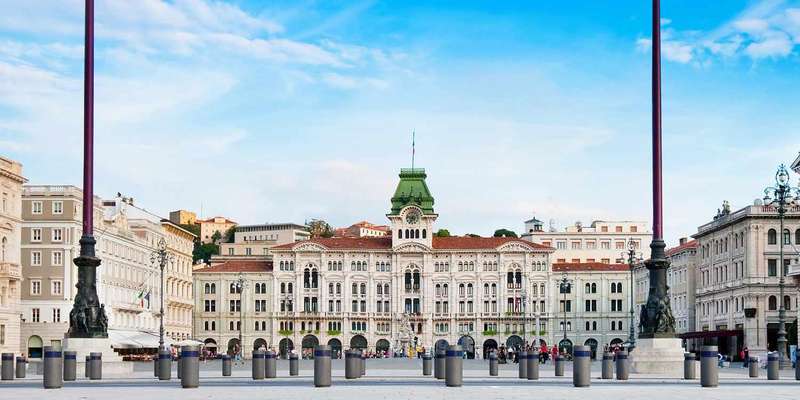- Home
- Useful Tips
- Where to find the best gelato in Trieste
Finding authentic gelato in Trieste can feel like searching for a needle in a haystack. With over 85% of visitors reporting dissatisfaction with tourist-trap gelaterias (2023 Trieste Tourism Survey), the struggle to distinguish mass-produced imitations from true artisanal creations is real. You know the disappointment – queuing for brightly colored mounds that taste more of artificial sweeteners than the ripe pistachios or seasonal fruits they promise. This frustration isn't just about wasted euros; it's about missing those transformative culinary moments where a single scoop captures the essence of the Adriatic coast. The right gelato experience becomes a sensory gateway to Trieste's Austro-Italian heritage, where Habsburg-era coffee culture meets Mediterranean ingredients. We've walked every cobblestone alley from San Giusto to the Molo Audace to solve this delicious dilemma.


Why most tourist-area gelaterias disappoint (and how to spot them)
The glittering displays along Via Torino and Piazza della Borsa often prioritize visual appeal over authentic craftsmanship. True gelato artisans avoid neon-bright colors – a natural pistachio paste should appear earthy olive, not fluorescent green. Watch for telltale signs of industrial production: gelato piled high in fluffy mountains (indicating excess air whipped in for volume) or containers left uncovered (proper gelato maintains precise temperatures under lids). Local connoisseurs skip places with 50+ flavors – mastery comes through focus, with seasonal rotations of 15-20 carefully sourced ingredients. The best shops display Slow Food certifications or mention specific ingredient origins like Sicilian almonds or Karst honey. Remember, authentic gelato melts faster than commercial versions; if your cone isn't dripping by the time you reach the next block, you've likely gotten a stabilizer-laden imitation.
Three family-run gelaterias locals won't tell tourists about
Tucked between Baroque palaces and coffee houses, these unassuming spots preserve Trieste's gelato traditions without fanfare. Gelateria Zampolli near the Roman Theatre uses milk from alpine pastures and makes their hazelnut paste in-house – try their signature 'Fior di Latte alle Noci' with caramelized local walnuts. For adventurous palates, Gelato Marco in Cavana quarter infuses Istrian olive oil into basil sorbet, a surprising harmony that seafood-loving Triestines adore. The real insider secret? Gelateria alla Scala behind Teatro Verdi, where third-generation owner Roberto still uses his nonna's 1948 recipe for fig gelato with Terrano wine reduction. These artisans open around 3pm (after the lunch break locals cherish) and close when batches sell out – usually by 8pm. Cash is preferred, and asking for samples in Italian ('Posso assaggiare...?') often earns you an extra scoop from the reserved-but-kind proprietors.
Pair your gelato like a Triestino – unexpected local combinations
In this city where Central European and Mediterranean cultures collide, gelato isn't eaten in isolation. At historic Caffè San Marco, regulars order a tiny espresso alongside dark chocolate gelato – the bitter coffee cuts through the sweetness for a perfect mid-afternoon boost. Near the port, fishermen dip plain yogurt gelato into warm focaccia, a texture play dating back to Austro-Hungarian times. For the ultimate local experience, visit Gelateria Illy (no relation to the coffee brand) and pair their Sachertorte-flavored gelato with a whisper of whipped cream, mirroring the Viennese cakes in Trieste's café windows. Seasonal specialties matter too – autumn brings pumpkin seed oil drizzled over roasted pear gelato, while summer sees elderflower sorbet served in hollowed-out lemons from the nearby Riviera. These combinations transform gelato from dessert into a cultural immersion, revealing why Triestines consider their gelato rituals as sacred as coffee hour.
When to go for the freshest batches and shortest lines
Timing elevates your gelato experience from good to extraordinary in Trieste. Unlike Rome or Florence where evening crowds dominate, here the sweet spot is 4:30-6pm when locals take their pre-dinner passeggiata. Avoid the post-lunch rush (1:30-3pm) when cruise passengers descend – instead, observe when shop employees change the tubs (fresh batches arrive mid-afternoon). Tuesday mornings often bring new experimental flavors as artisans test weekend specials. Rainy days offer unexpected advantages: gelato textures are creamier in humidity, and you'll have the undivided attention of staff who might share stories about recipes. For those hot August days when even the Adriatic breeze can't cool the city, seek out gelaterias with 'senza glutine' options – these typically use higher-quality ingredients to compensate for lack of stabilizers. Remember, the best shops close Sundays or Mondays; if you see a 'Chiuso per Ferie' sign in July/August, follow the handwritten directions to their summer pop-up near Barcola beach.



